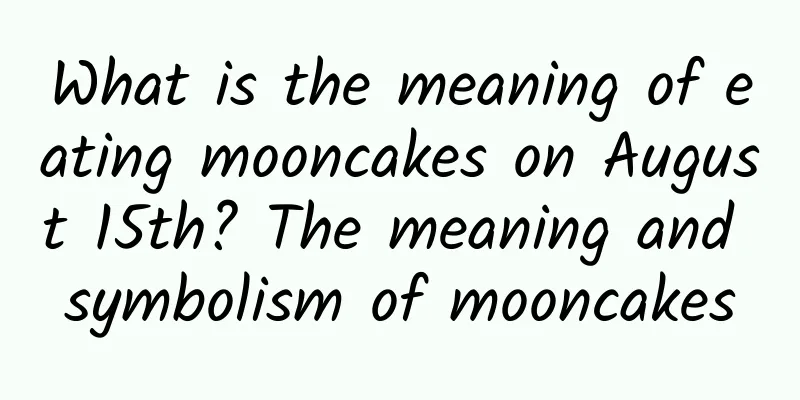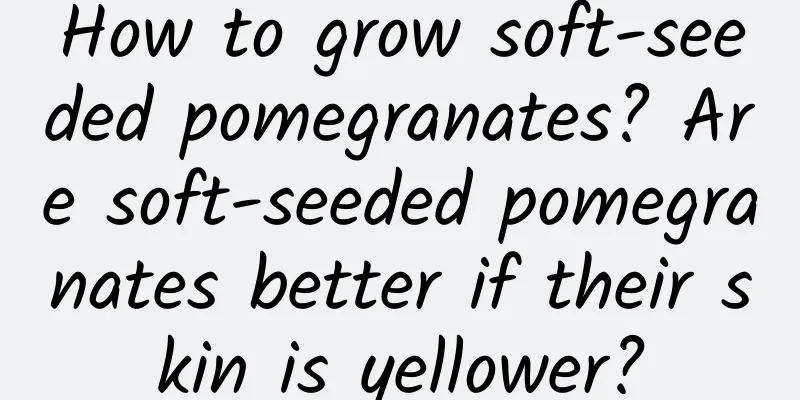What is the meaning of eating mooncakes on August 15th? The meaning and symbolism of mooncakes

|
Mooncakes are tributes to the moon god during the Mid-Autumn Festival in ancient my country. They symbolize reunion and happiness. They not only reflect people's wish for a better life with family reunions, but also express their longing for relatives and friends. The custom of using mooncakes to worship the moon god during the Mid-Autumn Festival originated in the Tang Dynasty, and it was not until the Ming Dynasty that the custom of eating mooncakes during the Mid-Autumn Festival began. Mooncakes have been integrated with local dietary customs to develop into Cantonese, Shanxi, Beijing, Su, Chaozhou, Yunnan and other mooncakes. In terms of taste, mooncakes are also different, with sweet, salty, salty and sweet, spicy, etc., especially now that there are more and more mooncake flavors, and even the more exotic the flavors, the more attention they receive. Eating mooncakes on August 15 has become a must-have dessert for our Chinese reunion moments. Contents of this article 1. What is the meaning of eating mooncakes on August 15th? 2. What are the red and green threads in the mooncakes? 3. The meaning and symbolism of mooncakes 1What is the meaning of eating mooncakes on August 15th?The meaning of eating mooncakes on August 15th is reunion. In ancient my country, there was a custom of worshipping or offering sacrifices to the moon every August Mid-Autumn Festival. Mooncakes were originally used as offerings to the moon god. After the Mid-Autumn Festival, the whole family sat together to share the offerings. The mooncakes among the offerings were round, symbolizing reunion, so gradually it became a meaning that eating mooncakes on August 15th represents family reunion. Mooncakes, also known as moon cakes, small cakes, harvest cakes, reunion cakes, etc., are one of the traditional Chinese Han delicacies. Mooncakes have been integrated with local eating habits to develop into Cantonese, Shanxi, Beijing, Su, Chaozhou, and Yunnan styles of mooncakes. The Mid-Autumn Festival originated in ancient China, became popular in the Han Dynasty, took shape in the early Tang Dynasty, and became popular after the Song Dynasty. 2What are the red and green threads in the mooncakes?The red and green silk in the mooncakes is Qinghongsi, a special seasoning used in processed food. The main ingredients of Qinghongsi include fresh orange peel, radish, papaya, etc., as well as auxiliary ingredients such as white sugar, alum, erythrin, cyanidin, and powdered sugar. Qinghongsi was called Qingsi Rose in the 1990s. It is a filling commonly used in traditional pastries and is commonly found in mooncakes and Yuanxiao fillings. Traditional Qingsi Rose is made of two materials: Qingsi and rose. Qingsi is made of green plums cut into shreds and put into pastry fillings or as a garnish on pastry surfaces. Rose is made of rose petals soaked in sugar and made into a paste. The current production process of green and red silk includes material preparation, shredding, dipping, green and red coloring, candied, mixed with powdered sugar, sun drying, packaging, etc. The finished product is best bright in color, sweet, transparent, and has a certain toughness after eating. 3The meaning and symbolism of mooncakesMooncakes are an offering to the Moon God during the Mid-Autumn Festival in ancient my country. They symbolize reunion and happiness. They not only reflect people's wish for a better life with their family, but also their longing for their relatives and friends. The custom of using mooncakes to worship the Moon God during the Mid-Autumn Festival originated in the Tang Dynasty, and the custom of eating mooncakes during the Mid-Autumn Festival did not come into being until the Ming Dynasty. There are different mooncakes in different regions, such as Beijing style, Cantonese style, Suzhou style, Taiwanese style, Yunnan style, and Hong Kong style, and the varieties are very rich. Mooncakes also come in different flavors, including sweet, salty, salty-sweet, spicy, etc. Especially now, there are more and more flavors of mooncakes, and the more exotic the flavors, the more attention they receive. The shapes are also different. There are smooth mooncakes, lace mooncakes, Monkey King mooncakes, and old birthday mooncakes. They can be roughly divided into five categories: Beijing, Tianjin, Guangdong, Suzhou, and Chaozhou. |
<<: Why do we drink cola when eating hamburgers? Are hamburgers junk food?
>>: How many flavors are there in traditional mooncakes? Why is lard added to mooncakes?
Recommend
Cystic ovary suitable for exercise
Everyone knows that exercise can strengthen the b...
Amniotic fluid present at 11 weeks of pregnancy
Pregnancy is a very important thing for women. Fr...
Drinking is bad for your brain! The more you drink, the smaller your brain becomes and the earlier you age?
Is drinking alcohol good for your health? not goo...
Does skipping rope help ovarian follicles rupture?
Don’t think that follicle rupture is a bad physic...
Women have body odor
The lower body is a very important and private pa...
What are the treatments for postpartum rheumatic disease?
If you do not take good care of your body after g...
This can relieve the pain in the navel during menstruation
In addition to breast changes, women may also exp...
What to eat to make your skin smoother
The water content of human tissue fluid is 72%, a...
Pregnancy after angiography
The main purpose of radiography is to check the s...
Can chronic salpingitis heal itself?
Chronic salpingitis is a bacterial infectious dis...
This time the menstrual flow is very light, almost no
Women's menstrual period is generally conside...
What happens if a pregnant woman eats crabs?
Autumn is the season of harvest. The weather is c...
What causes irregular postpartum bleeding?
Vaginal bleeding is the most common symptom of gy...
Can I have my teeth pulled during my period?
Compared with people in many countries in Europe ...
An inch longer is an inch stronger. How can you stretch to be healthier?
There is an old saying that "an inch longer ...









